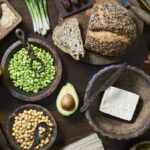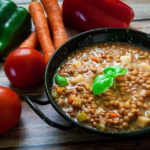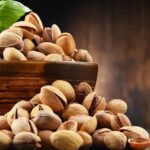From being a staple food in Spain for generations, legumes have come to be considered an old, heavy and even fattening food. But none of this is true. Legumes continue to be one of the healthiest foods we can eat, not all dishes that contain them are so filling and, on top of that, they help you lose weight. In addition, prestigious institutions such as Harvard University have highlighted the role of legumes in improving cardiovascular health.
Legumes stand out because they contain a high amount of carbohydrates, proteins and fiber, but practically no fat. Despite this, we remember them as a heavy meal, but this is because we have traditionally accompanied them with processed meats with as much fat as blood sausage or chorizo. Now, legumes go best with vegetables and whole grains, which round out their healthy properties.
Without a doubt, these dried seeds are a health treasure at a fairly low price, but are there some that are better than others? What is really important is that all of them are healthy and, therefore, we can be guided by which ones we like the most: any we add will be beneficial. Now, there are some parameters that do allow us to say that chickpeas are probably the most complete legumes. While each legume stands out for something, chickpeas are special.
Chickpea proteins
Lentils stand out because they contain the highest protein content: almost 24% of their composition is made up of them, according to the Spanish Nutrition Foundation (FEN). Beans, for their part, contain the most fiber: more than 25% of their composition is made up of this nutrient, as also explained by the FEN. Chickpeas are, therefore, neither the most protein legumes nor the ones with the most fiber, although their content of both substances is also quite high.
Plant foods can be a good source of protein, almost as much as those of animal origin, and legumes are the perfect example. Now, there is a problem with the proteins in almost all plant foods and that is that they are usually incomplete. Proteins are made up of amino acids and some, in particular, are essential, that is, they must be incorporated through food because the body does not produce them. While meat has all of these amino acids, vegetables often lack one.
Of course, a few plant foods are considered complete proteins as they have all the essential amino acids and in that select group are chickpeas. In any case, the proteins of any other legume can be made complete with a simple gesture: adding a cereal. The proteins contained in cereals are also incomplete, but they lack the amino acid that legumes have, and vice versa. That is, one food complements the other and, therefore, it is recommended, for example, to accompany lentils with rice.
Benefits
Proteins not only serve to repair tissues and even increase muscle mass, but they also contribute to making chickpeas so satiating. That is, after eating them we feel less hungry and, therefore, we do not eat more calories than necessary. This is how legumes help us lose weight. Precisely, the fiber that accompanies these proteins is the substance that is associated with other of the many benefits of chickpeas and that Harvard University includes on its website.
“Both dried and canned legumes have low glycemic index and load and contain amylose, a resistant starch that digests slowly. These factors help prevent sudden spikes in blood sugar and insulin levels, which can improve glycemic control in people with type 2 diabetes,” explains the American university. In addition, these types of foods with a high glycemic index also help prevent the onset of this type of diabetes.
In addition, the fiber of chickpeas has a substance called raffinose, which is an oligosaccharide that, when fermented in the colon by the beneficial bacteria that inhabit it, becomes butyrate. “Butyrate helps reduce inflammation in the cells of the intestinal walls, which promotes the regularity of transit and possibly the prevention of colorectal cancer,” explains Harvard. Finally, the sterols in chickpeas reduce cholesterol and contribute to better cardiovascular health.













